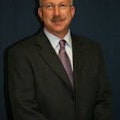Are you spending money on advertising in several types of media to draw customers to your shop? How would you like to save that money?
Collision repair facilities are pleased to advertise they have the best customer service, which is defined as a series of activities designed to enhance the level of customer satisfaction – the feeling that a product or service has met the customer expectation. That sounds pretty mechanical to me. The service is what you provide. The customer is the person needing the service.
It's not difficult to meet expectations, which creates good customers. But if you want to generate a referral, you need to develop great customers. You'll need to institute a process that improves how you and the customer interact with each other while you're providing that service to promote a completely satisfied experience. Relating to the human element of the customer is just as important as repairing his automobile.
People will do business with people they like. They'll make their decisions based on what makes them feel good, and nobody will make a decision that leaves them feeling uncomfortable. One of the best ways to make a customer feel comfortable is to be confident and enthusiastic about the service you provide and the repair you're going to make on their automobile. You don't have to be Superman or an industry expert. You only have to care, but you have to show it. Develop a customer-involved business that makes the customer feel good. Change how the customer looks at you by adding a personal touch and promote practices that turn good customers into friends – friends who will refer their friends. Do this, and you'll save advertising dollars.
The collision repair customer usually is drawn to your business because of a negative event. You have two choices: You can perpetuate the negative event, or you can take the extra step and create a positive experience that the customer will remember. Take the time to assess the damage on his vehicle. Was it his dream car that was just damaged? Was it his first car, or maybe a teenager's first accident?
Simple things you can talk to the customer about establish a bond, so create a relationship by adding the human element to your service. A customer might be more worried that one of his aftermarket wheels were scratched more than the fact his right front fender is torn off. They could be special wheels. They could have been a gift or discontinued. The time you take to discuss a customer's concern about his wheels could mean the difference between having a good customer and a great one. Unless you talk and listen to the customer, you might not know what the customer's real need is – the need you must address to satisfy him completely.
When your customer realizes you care about him, you make a positive impression and create a great customer. Help him eliminate the negatives of the event and focus on the positives. Explain how you'll correct the situation, how you'll handle the repair, how you'll take care of the wheel. Do that and you'll be well on your way to creating a relationship with the customer he'll remember more than the event itself. That should be your goal – to be remembered, not for what you do, but because of what you did.
When you're remembered for what you did, you'll gain loyalty and earn trust. You continue to grow the relationship by making decisions with the customer's best interest in mind, accommodating his requests and honoring his wishes without making him feel like he's interfering or complicating the process. As you do this, you'll move the customer from being a good customer to a great one. Great customers love you. They will tell their friends about you, allowing you to earn referrals greater than any return on an advertising.
Look at how you interact with your customers and see how you can move from providing good customer service to developing great customer relationships. Know your customer, and they'll come back. Few businesses can survive by serving a customer only once. You have to develop practices that turn good customers into great referring ones.
About the Author
John Shoemaker
John Shoemaker is a business development manager for BASF North America Automotive Refinish Division and the former owner of JSE Consulting. He began his career in the automotive repair industry in 1973. He has been a technician, vehicle maintenance manager and management system analyst while serving in the U.S. Air Force. In the civilian sector he has managed several dealership collision centers, was a dealership service director and was a consultant to management system providers as an implementation specialist. John has completed I-CAR training and holds ASE certifications in estimating and repair. Connect with Shoemaker on LinkedIn.
